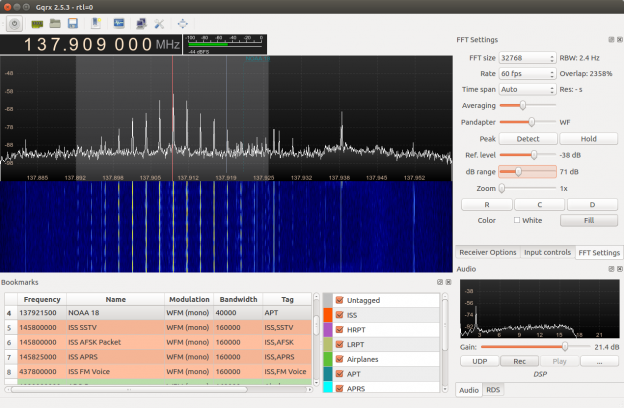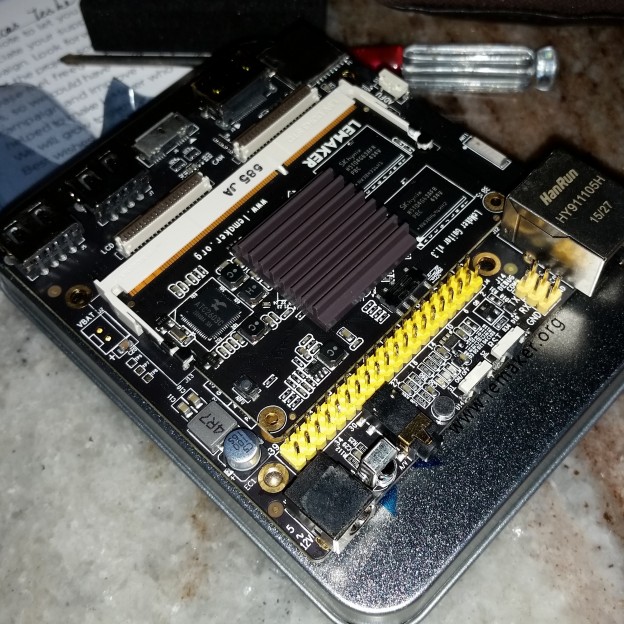
FM/TV Diplexer Test
So it has been a time since my last post (again). Today I’m writting about a TV/FM Diplexer that I bought to address a issue that I’m having here with my NOAA stuff. So the biggest problem is that in São Paulo the FM Radio (88-110MHz) are VERY strong. I can receive a -40dBm signal with a RTL-SDR with no gains in almost all channels. This is a big issue since the RTL-SDR does not have a input filter (actually it has, see my patches at https://github.com/librtlsdr/librtlsdr ) the LNA gets very easily saturated when getting gains over 25dB (usually needed by APT...
Recording NOAA APT Signals with GQRX and RTL-SDR on Linux

GQRX NOAA 18 Signal So you all saw my last posts [ Play with SDR and Intel Edison! QFH Antenna and my first reception of NOAA! ] but I actually didn’t explained how to capture and decode APT Signals using your computer (in this case, with Linux). So here it is! For this article I’m using Ubuntu 15.04, but actually any distro will work well (I think most of them have the needed packages) So the first thing you need to do is to get all needed hardware to start playing. I’ve already tested my i7 Skylake Laptop, a Intel Edison and LeMaker Guitar...
LeMaker Guitar Review

So I few weeks ago I received a LeMaker Guitar board that I won on a contest. I got really happy about that and they sent by DHL that made everything went really fast. As usual, in Brazil the tax everything including prizes and samples, so I got R$90 of taxes over the board. I won’t complain much about it, because it was cheap and expected. So after some time (sorry for the long time, I got really busy 🙁 ) I managed to write this review about this board! So talking about the board specs. This is a QuadCore ARM Cortex...
QFH Antenna and my first reception of NOAA!
So in my last post I was playing with my RTL-SDR with an Intel Edison. So I decided to build a QFH Antenna to ble able to receive NOAA APT Signals. These NOAA Weather Satellites broadcast a APT signal with about 5 to 8 Watts at 2m band, and considering how low this power is, it might suprise you that these signals arrive pretty strong at earth surface. But the biggest challenge to receive this signals are not its power. Its all about movement. These satellites are sun-synchronous low orbit satellites, that means they aren’t locked to earth rotation. Instead,...
Play with SDR and Intel Edison!
So some people already saw in my facebook that I started playing with SDRs (Software Defined Radio). I always wanted to do my own radio receiver, and I did some in the past. But it’s very hard to adapt the radio for anything new you want do to, and also when you want to process data in your computer things become harder. So a few months ago I found a nice tutorial of how to get NOAA Satellite Images using a cheap DVB-T (Digital Video Broadcast – Terrestrial) dongle that can be used as SDR. It costs about R$70 (roughly...